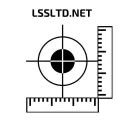From Cowboy Fixes to Credible Standards: The Psychology of Making Centraliser the Default
In every industry there are two ways of getting things right. One is to rely on the individual brilliance of the people doing the work: a steely-eyed foreman, a time-served fixer with a sixth sense, a site engineer who can spot a millimetre at thirty paces. The other is to design a process that makes […]










